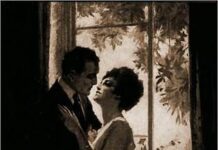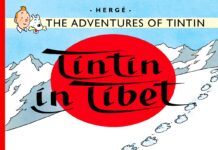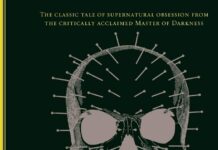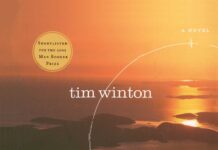In the fascinating crossroads between spirituality, tradition, and modern medicine lies Shaman, Healer, Heretic, a compelling journey through the diverse landscapes of belief and healing practices around the world. This book invites readers to explore how ancient wisdom and contemporary science intersect, clash, and sometimes harmonize in the quest to understand what it truly means to heal. In this review, we delve into the narrative’s rich tapestry, examining how it navigates the complexities of faith, skepticism, and cultural identity without favor or prejudice, offering a thought-provoking perspective on the enduring human pursuit of wellness.
Exploring the intersection of tradition and Modernity in Shaman, Healer, Heretic and Its Impact on Contemporary Spirituality

In Shaman, Healer, Heretic, the intricate dance between ancient rites and contemporary values is laid bare, revealing how age-old spiritual practices continually adapt within a rapidly changing world. This work challenges the dichotomy of tradition versus modernity by illustrating how the roles of shamans and healers extend beyond mere cultural relics to become active agents in today’s holistic wellness movements. The narrative highlights the fluidity of belief systems, showing that what once was considered heretical can, through the lens of time and context, evolve into accepted forms of healing and spirituality. This intersection provokes readers to reconsider not only the nature of spiritual authority but also the legitimacy of alternative healing methods within mainstream discourse.
Key themes surface vividly in the text, underscoring the ongoing negotiation between respecting ancestral knowledge and embracing scientific inquiry. The book presents a compelling dialog that combats reductionist views of spirituality by emphasizing:
- Continuity: The preservation and reinterpretation of symbolic rituals amidst societal shifts.
- Change: The way healers incorporate modern therapeutic techniques without losing cultural identity.
- Contestation: Challenges posed by institutional skepticism and the labeling of certain practices as heretical.
| Aspect | Traditional Role | Modern Adaptation |
|---|---|---|
| shaman | Spiritual intermediary, ritual leader | Holistic therapist, cultural consultant |
| Healer | Herbalist, community caregiver | Integrative medicine practitioner |
| Heretic | Outcast challenging orthodoxy | Innovator sparking new paradigms |
Together, these elements reveal how Shaman, Healer, Heretic invites contemporary spirituality to embrace complexity-welcoming both the mystical and the scientific to coalesce in a richer understanding of healing and belief.
A Deep Dive into the Author’s Portrayal of Healing practices Across Cultures and Their Relevance Today

The author’s exploration of healing practices spans a vibrant tapestry of cultures, weaving together ancient wisdom and modern perspectives. By delving into rituals from indigenous shamanism to contemporary holistic methods, the narrative challenges readers to reconsider the boundaries of what constitutes legitimate healing. Rather than presenting these traditions as relics of the past, the text highlights their enduring vitality, emphasizing how they resonate with the human quest for meaning and balance in health today. The portrayal is neither romanticized nor dismissive but offers a measured reflection on the symbiotic relationship between belief systems and therapeutic outcomes.
What stands out is the nuanced breakdown of healing modalities, categorized thoughtfully to showcase both shared elements and distinctive features:
- Spiritual Connection: Practices focusing on the harmonization of mind, body, and spirit.
- Ritualistic Elements: ceremonial acts intended to invoke transformation and catharsis.
- Community Involvement: Healing as a collective process supporting individual well-being.
- Material Interventions: Use of natural substances and physical therapies.
| Healing Aspect | Traditional Examples | Modern Relevance |
|---|---|---|
| Spiritual Connection | Shamanic trance, prayer | Mindfulness, meditation |
| Ritualistic Elements | Purification rites, drumming | Therapeutic ceremonies, sound therapy |
| Community involvement | healing circles, storytelling | Group therapy, support networks |
| Material Interventions | Herbal remedies, massage | Herbal supplements, physiotherapy |
This extensive mapping affirms that while the modalities may differ in context and execution, their core intentions align closely with fostering holistic health. The author’s equanimity encourages an thankfulness of the plurality in healing narratives, recognizing that embracing diverse cultural frameworks can enrich contemporary health dialogues and expand the spectrum of care available to individuals today.
Unpacking the Narrative Structure and How It Engages Readers in the Journey of Belief and Skepticism

The narrative structure of Shaman, Healer, Heretic masterfully oscillates between the realms of belief and skepticism, inviting readers into a dynamic intellectual and emotional dance. Instead of presenting a linear storyline, the author employs a fragmented yet cohesive approach-interweaving personal anecdotes, ethnographic insights, and critical analysis.This layered composition mimics the very experiance of navigating faith and doubt, encouraging readers to question alongside the protagonist.The alternating chapters shift perspectives, ranging from passionate embraces of traditional healing to moments of radical questioning, which crafts a tension that is both palpable and thought-provoking.
Such a structure fosters engagement through:
- Contrasting viewpoints that challenge readers to reconcile conflicting ideas
- Intermittent pauses that mimic reflection and self-inquiry
- Vivid storytelling framed by analytical depth, transforming abstract concepts into lived experience
| Narrative Technique | impact on Engagement |
|---|---|
| Juxtaposition of Rationality & Spirituality | Invokes curiosity and internal debate |
| Use of Anecdotal evidence | Creates emotional resonance and authenticity |
| Open-ended Conclusions | Invites ongoing reflection beyond the page |
Examining the Role of personal Experience Versus Scientific Inquiry as Presented in the Book

In Shaman, Healer, Heretic, the tension between personal experience and scientific inquiry forms a dynamic core of the narrative. The author vividly illustrates how individual stories of healing, ofen marked by profound transformation and inexplicable outcomes, challenge the rigid confines of conventional scientific methods. Personal experience is portrayed not simply as anecdotal evidence but as a legitimate facet of understanding human health that resists reduction to laboratory variables or clinical trials.This perspective encourages readers to appreciate the complexity of healing as both subjective and deeply human, rather than solely objective and measurable.
Conversely, the book acknowledges the indispensable value of scientific scrutiny in distinguishing placebo effects from genuine therapeutic benefits. It neither dismisses nor wholly embraces mysticism but proposes a nuanced dialogue between these worlds.To help clarify this relationship, consider the table below which contrasts key aspects of both approaches:
| Aspect | Personal Experience | Scientific Inquiry |
|---|---|---|
| Validation | Subjective affirmation | Empirical evidence |
| Methodology | Intuitive, narrative-based | Systematic, hypothesis-driven |
| Impact | Emotional and transformative | Repeatable and generalizable |
| Limitations | Prone to bias, lacks control | May overlook individual nuances |
- Integration of both perspectives is presented as a path toward a more holistic understanding of healing.
- The book challenges readers to question entrenched assumptions about what constitutes valid knowledge.
- It invites an exploration of how belief and evidence can coexist rather than compete.
The Use of Vivid Imagery and Storytelling Techniques That Bring Shamanic Practices to Life on the Page

Engaging the reader through a tapestry of vivid imagery, Shaman, Healer, Heretic transcends mere academic recounting, inviting us deep into the sensory and spiritual worlds of shamanic practitioners. The prose sparkles with evocative descriptions – from the crackling flames of ceremonial fires to the piercing chant echoes that ripple through mountain air – each element painting a palpable atmosphere. This sensory immersion breathes life into often intangible experiences, making the unseen mysteries of healing rites feel immediate and tangible. The author’s deft use of sensory details such as sound, color, and texture creates a visceral connection, bridging cultural distances and drawing the reader close to the heart of these ancient practices.
Beyond imagery, the book masterfully employs narrative techniques that mirror the fluidity and complexity of shamanic journeys. Personal stories and firsthand accounts are woven seamlessly with ethnographic insights, forming a rich mosaic that conveys both personal transformation and cultural context. The use of:
- dialogue snippets that capture voices from diverse traditions,
- nonlinear storytelling reflecting the cyclical nature of healing,
- symbolic motifs threaded throughout chapters
adds layers of meaning without overwhelming. This narrative strategy keeps the pace dynamic and allows readers to navigate the multifaceted landscape of belief, doubt, and healing. In doing so, the book doesn’t just inform but animates, sharing stories that resonate long after the last page is turned.
Assessing the Balance Between Respect for Indigenous Wisdom and Critical Analysis of Healing Claims
In exploring the delicate interplay between honor and skepticism, this work masterfully negotiates the fine line where reverence for Indigenous knowledge meets the rigors of critical inquiry.It avoids the pitfalls of romanticizing cultural practices blindly while also resisting the reduction of ancient healing methods to mere superstition. Through thoughtful narration and detailed case studies, it invites readers to appreciate the depth of traditional wisdom – not only as ancient curiosity but as living, evolving systems of understanding health and the human experience.This balance fosters a space where questions arise naturally, encouraging open-minded exploration without dismissing the value that these traditions hold for Indigenous communities worldwide.
Crucial elements addressed include:
- Recognizing the contextual roots of healing practices within Indigenous cosmologies.
- Applying empirical scrutiny without erasing cultural meaning.
- Encouraging dialogue between Western medicine and traditional knowledges.
- Honoring Indigenous agency in defining the meanings and efficacy of their healing arts.
| Aspect | Respectful Engagement | Critical Analysis |
|---|---|---|
| Approach | Holistic & Contextual | Evidence-based & Questioning |
| Goal | Preservation & Empowerment | Verification & Understanding |
| Outcome | Cultural Continuity | Enhanced Legitimacy |
How the Book Challenges Conventional Perceptions of Medicine,Faith,and the Nature of Healing
At its core,the narrative dismantles the rigid boundaries separating scientific medicine,spirituality,and cultural tradition. It invites readers to reconsider how healing transcends the sterile environment of clinics and enters realms where faith and personal belief hold sway. By weaving personal experiences with anthropological insights, the author reveals the subtle yet profound ways in which indigenous practices challenge the conventional idea that healing is purely a biochemical process. This perspective not only questions what constitutes evidence in medicine but also urges a more inclusive understanding that respects alternative forms of knowledge.
- Healing as a communal and spiritual journey, not merely a clinical act
- The role of faith in shaping both patient and practitioner experiences
- how cultural narratives influence perceptions of illness and recovery
Moreover, the book deftly exposes the often unspoken tensions between orthodox medical practitioners and traditional healers. This friction illuminates deeper questions about authority, legitimacy, and the human need for connection in times of vulnerability. By challenging the established hierarchy of knowledge, it suggests a future where diverse healing methods coexist, rather than compete. Below is a simplified comparison highlighting distinct approaches:
| Aspect | Conventional Medicine | Traditional/Shamanic Healing |
|---|---|---|
| Approach | Evidence-based,mechanistic | Holistic,spiritual |
| treatment Focus | Symptoms and pathology | Balance of body,mind,and spirit |
| Role of Faith | Minimal or none | Integral and therapeutic |
Recommendations for Readers Interested in Spirituality,Anthropology,and Alternative Healing traditions
For those journeying through the intricate intersections of spirituality, anthropology, and alternative healing, this work serves as a compelling guidepost.It invites readers to embrace a multidimensional perspective where ancient rituals meet modern skepticism, and healing transcends conventional boundaries. Consider exploring fieldwork narratives and ethnographic studies alongside this text to deepen your understanding of cultural contexts behind diverse healing practices. Engaging with these resources enriches the appreciation of how belief systems shape not only individual experiences but also collective worldviews.
If your curiosity leans towards practical applications or theoretical frameworks, these complementary reads and tools can enhance your exploration:
- “The Spirit Catches You and You Fall Down” – a powerful narrative on cultural clashes and medical anthropology.
- Participant observation journals documenting encounters with indigenous healers.
- Meditative and somatic practice guides that blend contemporary alternative healing with ancestral wisdom.
- Interactive online forums where practitioners and scholars debate definitions of authenticity in spiritual healing.
| resource Type | Recommended Works/Platforms | Why It matters |
|---|---|---|
| Narrative Literature | “The Spirit Catches You and You Fall Down” | Bridges personal stories with complex cultural dynamics. |
| Ethnographic Journals | Collections of fieldwork notes | Offers raw insights into healing ceremonies and beliefs. |
| Practice Guides | Somatic healing manuals, meditation apps | Connects theory to lived experience through embodied techniques. |
| Community Platforms | Specialized forums and social media groups | Fosters dialogue and diverse viewpoints on spirituality. |
The Potential Influence of This Book on Future Discussions about Integrative and Holistic Health Approaches
By weaving together anthropological insight with personal narrative, this book challenges conventional paradigms and invites readers to reconsider the boundaries between science and spirituality in healthcare. It serves as a catalyst for future dialogues that could embrace more nuanced,culturally sensitive,and patient-centered approaches. As holistic health continues to gain traction, the book’s exploration exposes the potential value of indigenous healing traditions, not as relics of the past, but as dynamic frameworks that can coexist with modern medicine. This perspective encourages practitioners and scholars alike to question rigid definitions of “valid” treatment,fostering an environment where diverse healing modalities are given space to thrive.
- Bridging cultures: Highlighting intersections between western medicine and indigenous wisdom
- Empowering patients: Supporting autonomy through personalized healing journeys
- rethinking evidence: Expanding criteria to include experiential and communal knowledge
Moreover, the insights from this text are likely to influence policy makers and educators by advocating for integrative curricula and health policies that reflect a pluralistic view of wellness. The following table summarizes key themes that could serve as cornerstones in shaping future integrative health discussions:
| Theme | Potential impact |
|---|---|
| Cultural Inclusivity | Broader acceptance of diverse healing traditions |
| Collaborative Care Models | integration of traditional healers and medical professionals |
| Expanded Definitions of Evidence | Recognition of qualitative and experiential data alongside clinical trials |
| Empathy and Spirituality | Enhanced patient-provider relationships |
In sum, the book lays foundational ideas that may reshape how future generations approach healing-encouraging a synthesis of belief and science, and opening new avenues for understanding health as a deeply personal and culturally grounded process.
reflections on the Ethical Dimensions and Cultural Sensitivity Exhibited Throughout the Work
throughout the narrative,the author demonstrates a profound respect for the diverse beliefs and practices encountered,carefully navigating the fine line between curiosity and cultural appropriation. the work acknowledges the complexity of engaging with indigenous spiritual traditions without imposing external judgments, emphasizing the importance of listening deeply and approaching each encounter with humility. This sensitivity is not only an ethical stance but a vital component that enriches the storytelling, reminding readers that healing and belief are inherently intertwined with the cultures they arise from.
Integral to the discussion is a nuanced appreciation for the ethical challenges faced by those who traverse between worlds-academics, healers, and seekers alike. The text encourages ongoing reflection on issues such as:
- Consent in sharing indigenous knowledge
- Respect for sacred practices and spaces
- Awareness of power dynamics influencing cross-cultural exchanges
This framework not only elevates the dialogue beyond simple observation but creates a blueprint for responsible engagement that others might follow, fostering a healing journey that honors both tradition and transformation.
Evaluating the Accessibility of the Writing Style for Both Academic Audiences and General Readers
The narrative style of Shaman, Healer, Heretic strikes a remarkable balance between rigorous academic insight and approachable storytelling, making it accessible to a diverse readership. The author deftly avoids jargon-heavy prose, opting rather for clear explanations and vivid anecdotes that illuminate complex concepts. This ensures that scholars and casual readers alike can engage with the material without feeling overwhelmed or excluded. Key strategies include:
- Integrating historical context alongside personal narratives to humanize abstract debates
- using metaphors and imagery that cater to both analytical and intuitive interpretations
- Offering concise summaries of critical theories without diluting their depth
However, while the book invites inclusivity, certain sections demand patience from readers less familiar with anthropological discourse or religious studies. For example, the detailed discussions related to epistemology and ethnographic methodology might require a second read for general audiences. The following table illustrates a simplified comparison of how specific content areas align with the expectations of academic versus general readers:
| Content Area | Academic Reader | General Reader |
|---|---|---|
| Theoretical Frameworks | Appreciates nuanced exploration | May find challenging but insightful |
| Personal stories | Valuable for illustrating ideas | Highly engaging and relatable |
| Ethnographic Detail | Critical for analysis | Potentially dense but informative |
Insights into the Author’s Background and How Personal Experience Shapes the Narrative Tone and Perspective
The author’s multifaceted background as both a practicing shaman and a rigorous scholar lends a distinctive authenticity and depth to the narrative voice throughout Shaman, Healer, Heretic. This blend of experiential knowledge and academic insight establishes a tone that is at once intimate and analytical, inviting readers into a world where personal transformation intersects with cultural tradition. The author’s journey-from early skepticism to embracing indigenous healing practices-creates a compelling undercurrent of vulnerability and curiosity, enriching the narrative with moments of doubt, revelation, and profound empathy.
Personal experience clearly informs more than just the tone; it shapes the very lens through which events and philosophies are examined. Key influences emerge as recurring themes:
- Cross-cultural immersion that challenges preconceived beliefs and biases
- Encounters with skepticism that fuel critical inquiry without dismissing spiritual intuition
- Interpersonal connections that humanize abstract concepts, making healing a lived rather than theoretical experience
These elements work together to craft a narrative perspective that is neither purely objective nor uncritically subjective but strikes a delicate balance, encouraging readers to navigate their own complex relationship with belief, healing, and identity.
In closing, Shaman, Healer, Heretic offers a fascinating window into the complex world of traditional healing and the tensions it navigates between faith, science, and cultural identity. Whether approached as an anthropological study or a narrative of human resilience, the book invites readers to reconsider the boundaries of belief and healing in ways both challenging and enlightening. As you finish this review, perhaps the true journey begins-not just through the pages, but through a deeper contemplation of the many paths that lead us toward understanding and wholeness.









